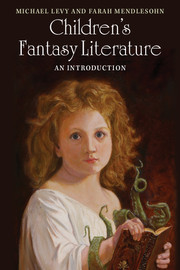Book contents
- Frontmatter
- Contents
- Acknowledgements
- Introduction
- 1 How fantasy became children's literature
- 2 Fairies, ghouls and goblins: the realms of Victorian and Edwardian fancy
- 3 The American search for an American childhood
- 4 British and Empire fantasy between the wars
- 5 The changing landscape of post-war fantasy
- 6 Folklore, fantasy and indigenous fantasy
- 7 Middle Earth, medievalism and mythopoeic fantasy
- 8 Harry Potter and children's fantasy since the 1990s
- 9 Romancing the teen
- Notes
- Further Reading
- Index
- References
3 - The American search for an American childhood
Published online by Cambridge University Press: 05 April 2016
- Frontmatter
- Contents
- Acknowledgements
- Introduction
- 1 How fantasy became children's literature
- 2 Fairies, ghouls and goblins: the realms of Victorian and Edwardian fancy
- 3 The American search for an American childhood
- 4 British and Empire fantasy between the wars
- 5 The changing landscape of post-war fantasy
- 6 Folklore, fantasy and indigenous fantasy
- 7 Middle Earth, medievalism and mythopoeic fantasy
- 8 Harry Potter and children's fantasy since the 1990s
- 9 Romancing the teen
- Notes
- Further Reading
- Index
- References
Summary
Most of the great American children's classics of the nineteenth century, of course, are based in the realist tradition. Nineteenth-century American readers, writers and critics generally felt a very real antipathy to the fantastic. Maria Edgeworth (1767–1849), an Irish writer who was enormously popular in the United States, emphasized the current and the practical in her fiction, and had no truck with fairy lore. In his Preface to her Moral Tales, her father, the educational reformer Richard Lovell Edgeworth, praised her for showing how her protagonist's ‘romantic eccentricities’ get her in trouble and cause her to be ‘ashamed to acknowledge her former friends’. In 1839 the American educator Jacob Abbott, best remembered today for his realist and didactic children's books in the Rollo Holiday series, wrote with great feeling about the worthlessness of the shortcuts to happiness provided by such magical objects as Aladdin's lamp, indicating that he had not entirely understood the message of the story, which also taught the reader not to squander good fortune. Some years later, Samuel Griswold Goodrich (1793–1860), who, as Peter Parley, was the bestselling children's writer in America during the nineteenth century, declared that he despised fairy tales, Mother Goose and all things fantastic in children's literature, going so far as to argue that ‘much of the vice and crime in the world are to be imputed to these atrocious books put into the hands of children, and bringing them down, with more or less efficiency, to their own debased moral standard’. And yet, the United States was not devoid of fancy, nor did all writers and readers regard fancy as the road to dissolution; for some, as we shall see in this chapter, fancy and fantasy were part of the essential heritage of the American child.
Distrust of the fantastic
The folklore of the Europeans who settled in the New World was rich. Stories of fairies who moved to America along with the immigrants they had lived with and bedevilled in the Old Country are quite common. The descendants of immigrants from the Scottish Highlands were particularly likely to hold on to such stories and, in those areas most isolated from the homogenizing tendencies of US development, they thrived. Appalachia was particularly fertile soil for such tales.
- Type
- Chapter
- Information
- Children's Fantasy LiteratureAn Introduction, pp. 49 - 72Publisher: Cambridge University PressPrint publication year: 2016

